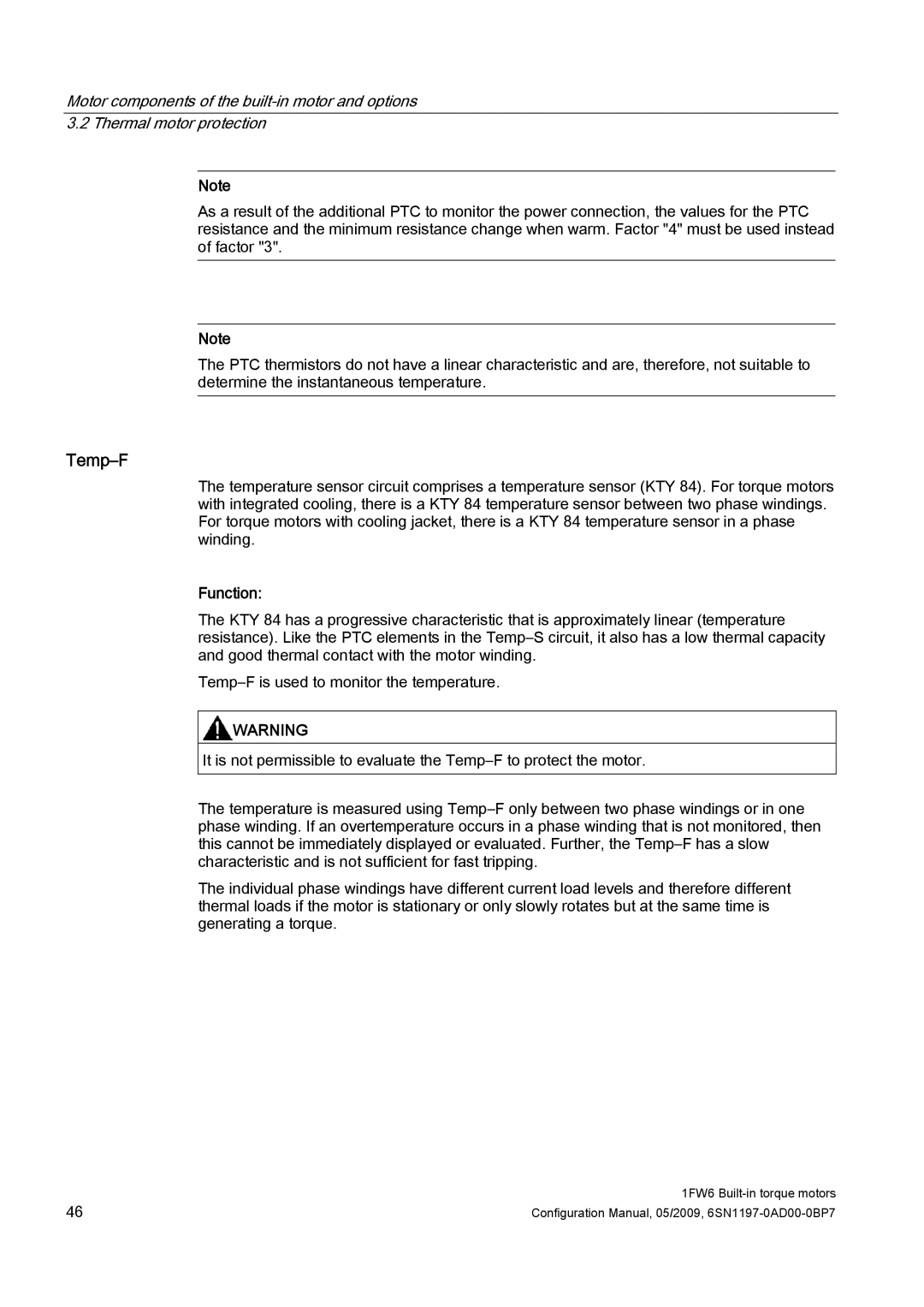
Motor components of the
Note
As a result of the additional PTC to monitor the power connection, the values for the PTC resistance and the minimum resistance change when warm. Factor "4" must be used instead of factor "3".
Note
The PTC thermistors do not have a linear characteristic and are, therefore, not suitable to determine the instantaneous temperature.
Temp–F
The temperature sensor circuit comprises a temperature sensor (KTY 84). For torque motors with integrated cooling, there is a KTY 84 temperature sensor between two phase windings. For torque motors with cooling jacket, there is a KTY 84 temperature sensor in a phase winding.
Function:
The KTY 84 has a progressive characteristic that is approximately linear (temperature resistance). Like the PTC elements in the
![]() WARNING
WARNING
It is not permissible to evaluate the
The temperature is measured using
The individual phase windings have different current load levels and therefore different thermal loads if the motor is stationary or only slowly rotates but at the same time is generating a torque.
46 | 1FW6 |
Configuration Manual, 05/2009, |
